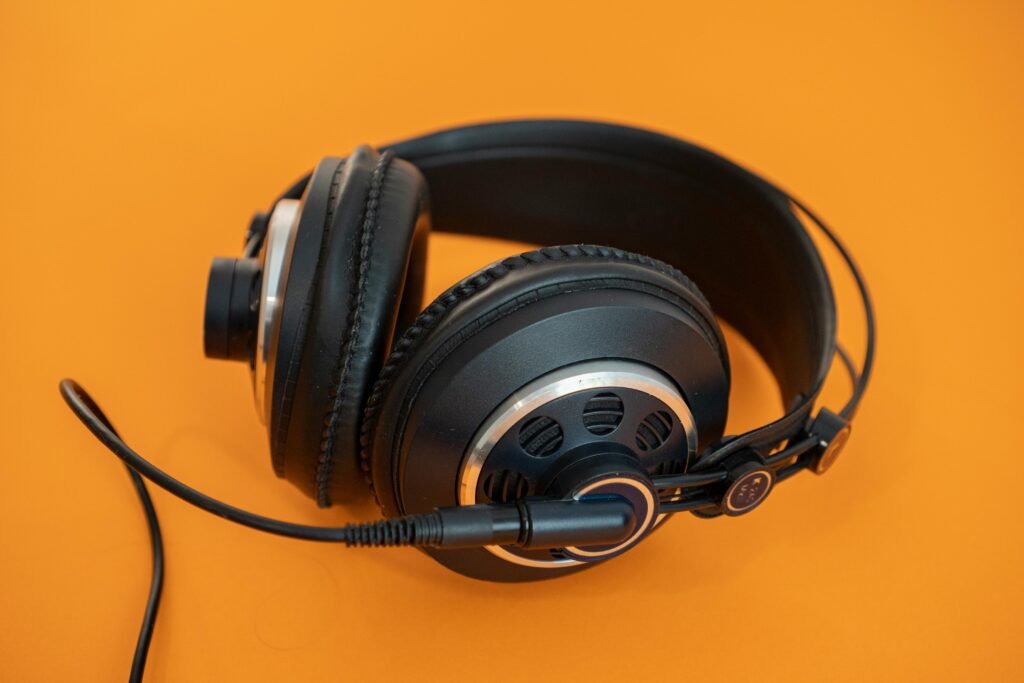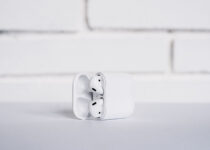When were headphones invented?
Have you ever wondered when the first headphones were invented? This seemingly simple yet profound innovation has transformed how we experience sound, but its origins might surprise you.
In the late 19th century, the first concept of headphones emerged, evolving from telephone receivers. Nathaniel Baldwin’s creation in 1910 marked a significant leap, leading to widespread adoption and subsequent advancements.
Curious to delve deeper into the fascinating history of headphones? Discover pivotal moments, innovative designs, and the impact of this technology on modern audio experiences.
Let’s embark on a journey through time and sound, exploring the evolution of headphones and their enduring influence on our daily lives.
Here how to put sony headphones in paring mode?
When were headphones invented?
Headphones were invented in the late 19th century.
The earliest known concept of headphones dates back to 1891 when Ernest Mercadier, a French engineer, designed a device called “ear speakers.”
However, the modern concept of headphones evolved over time.

In 1910, Nathaniel Baldwin created the first functional headphones in his kitchen and later patented them in 1910. These early headphones were primarily used by telephone operators and military personnel.
Further advancements came in the 1930s with Beyerdynamic introducing the first dynamic headphones.
The 1950s saw the introduction of stereo headphones by John C. Koss, making listening to music a more immersive experience.
Throughout the 20th century, various improvements in design, sound quality, and portability led to the development of the headphones we use today, ranging from wired to wireless, noise-canceling, and Bluetooth-enabled options.
When were headphones first used for music?
Headphones were first used for music in the early 20th century, specifically during the 1920s and 1930s.
Initially, headphones were primarily utilized in professional settings such as recording studios and radio broadcasting stations.
Here, how to turn off headphones safely.
They allowed musicians, audio engineers, and broadcasters to monitor sound without interference or distractions from external noise.
As technology advanced and headphones became more accessible, they started to be used by music enthusiasts for personal listening.
However, it wasn’t until the 1950s and 1960s that headphones gained popularity among the general public for music enjoyment.
This was partly due to the introduction of stereo headphones by companies like John C. Koss, which provided a more immersive and high-fidelity listening experience.
The 1970s marked a significant shift with the rise of portable music players like the Sony Walkman, which popularized the use of headphones for on-the-go music listening.
Since then, headphones have become indispensable accessories for enjoying music privately and with high-quality sound reproduction.
Were there headphones in the 70s?
Yes, headphones were available in the 1970s and played a crucial role in shaping how people consumed music during that decade.
One of the iconic devices that contributed to the popularity of headphones in the 1970s was the Sony Walkman, introduced in 1979.

The Walkman revolutionized portable music listening by allowing users to enjoy music on cassette tapes through lightweight headphones while on the move.
Prior to the Walkman, headphones were primarily used in professional settings like recording studios and radio stations.
However, the Walkman’s success made headphones a mainstream accessory for personal music enjoyment.
Alongside the Walkman, various headphone models were available in the consumer market during the 1970s, offering different features such as improved sound quality, comfort, and portability.
Overall, the 1970s marked a significant era for headphones as they transitioned from professional tools to everyday accessories for music enthusiasts, thanks in part to innovations like the Sony Walkman.
What did headphones look like in 1910?
Headphones in 1910 looked quite different from modern designs. The earliest headphones, such as those created by Nathaniel Baldwin, had a bulky and industrial appearance.
They were often made of heavy materials like metal and leather, with large ear cups that completely covered the ears.
The ear cups were connected by a metal headband, which was adjustable but lacked the comfort and flexibility of contemporary designs.
The drivers inside these headphones were also primitive compared to today’s technology.
They typically used dynamic drivers but lacked the advanced materials and engineering techniques that contribute to modern headphones’ superior sound quality.
Overall, headphones in 1910 were functional but far less comfortable, portable, and aesthetically pleasing than the sleek and lightweight designs we are accustomed to today.
Their primary purpose was for professional use, such as in telephone communication or early radio broadcasting, rather than personal music enjoyment.
Here, can you connect bluethooth headphones to PS5?
Were headphones used in the 60s?
Yes, headphones were used in the 1960s, although they weren’t as ubiquitous or popular as they would become in later decades.
During this time, headphones were primarily utilized in professional audio settings like recording studios, radio stations, and by musicians during performances.
One significant development in the 1960s was the introduction of stereo headphones by companies like John C. Koss.
Stereo headphones allowed users to experience a more immersive and spatial audio experience, especially with the increasing availability of stereo recordings.
However, these early stereo headphones were often bulky and not as portable or comfortable as modern designs.
While headphones were available for personal use, they were not yet a mainstream accessory for everyday consumers.
It wasn’t until the 1970s, with the advent of portable music players like the Sony Walkman, that headphones gained widespread popularity among the general public for music listening on-the-go.
History of headphones
Evolution of headphones
When were small earbuds invented?
Small earbuds, also known as earphones or in-ear monitors (IEMs), have a history that traces back several decades.
The concept of compact earpieces for personal audio dates back to the mid-20th century, but the modern form of small earbuds as we know them today began to take shape in the 1970s and 1980s.
In the early 1970s, Etymotic Research made significant advancements in developing small earphones for hearing aids.
Their research into miniature transducers and comfortable earpiece designs laid the groundwork for small earbuds’ commercialization. This led to the introduction of the ER-1, one of the first high-fidelity in-ear headphones, in 1984.
The late 1980s and early 1990s saw further developments in small earbud technology, notably with the advent of balanced armature drivers.
These drivers allowed for more precise and detailed sound reproduction in compact earpieces.
Shure, a prominent audio equipment manufacturer, introduced the E1 earphones in 1997, featuring balanced armature drivers and a comfortable, secure fit.
The popularity of small earbuds surged in the 2000s with the rise of portable music players like the iPod.
Apple’s iconic white earbuds, included with early iPod models, became synonymous with the portable music revolution.
Here, Beats earbuds wont stay in ear.
This period also witnessed advancements such as noise isolation technologies and custom-molded earpieces for a personalized fit, enhancing the listening experience.
Since then, small earbuds have continued to evolve. Companies like Bose, Sennheiser, Sony, and JBL have introduced wireless earbuds with features like active noise cancellation, touch controls, and long battery life.
The integration of Bluetooth technology further enhanced the convenience and versatility of small earbuds, making them a staple accessory for mobile audio enthusiasts and commuters alike.
Nathaniel baldwin first headphones
Nathaniel Baldwin is credited with creating some of the earliest functional headphones.
In 1910, Baldwin, a self-taught inventor from Utah, patented his design for headphones.
Unlike modern headphones, Baldwin’s early models were quite large and heavy, featuring bulky ear cups and a metal headband.
These headphones were primarily used in telephony and military applications, providing a means for clear communication in noisy environments.
Baldwin’s headphones were known for their robust construction and reliable performance, making them valuable tools for operators and personnel who required precise audio monitoring.
While Baldwin’s headphones were not as comfortable or portable as contemporary designs, they represented a significant step forward in audio technology during the early 20th century.
His contributions laid a foundation for the future development of headphones, paving the way for the sleeker, more lightweight, and advanced models that we use today.
Conclusion:
Headphones were invented in the late 19th century, with the first models emerging in the early 20th century.
Since then, they have evolved significantly in terms of design, technology, and functionality.
From simple single-ear designs to modern wireless and noise-canceling models, headphones have become an integral part of our daily lives, used for various purposes such as listening to music, watching videos, gaming, and communication.
Their invention revolutionized personal audio experiences, offering privacy, immersion, and convenience.
As technology continues to advance, headphones are likely to undergo further innovations, shaping the way we experience sound in the future.




